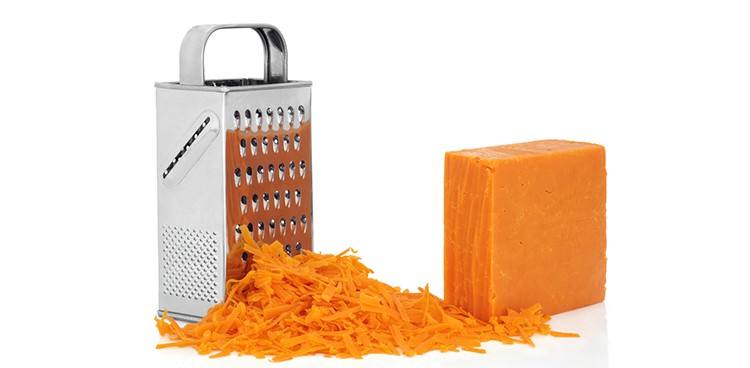
Years ago someone told me that all cheese is naturally white, and any cheese you see in the store that has color in it has been dyed.
While some cheese is dyed, let me dispel the myth right now: just because your cheese has some color in it does not mean tricky cheesemakers are pulling the wool over your eyes.
Cow’s milk cheese is a creamy off-white color or a buttery yellow if the cows are pasture fed. The reason is that the grass cows eat contains beta-carotene, a pigment most notably found in carrots. Beta-carotene dissolves into the cow’s fat stores and forms globules in their milk. The membranes surrounding these globules prevent the color from releasing into cow’s milk, but in the cheesemaking process these membranes dissolve and release color into the cheese. Cheeses that are a naturally buttery yellow will also see that color deepen as the cheeses age.
If the cheese has natural color, why bother to dye it all? Well, there are a couple reasons. Because beta-carotene is tied to fat, higher-fat cheeses have more color. In the seventeenth century, cheesemakers wanted to skim the fat out of their cheese and use the fat to make other products and get more money. Taking out this fat made the cheese white, which was a signal that the cheese was low quality and low in fat. By dying the cheese, cheeseemakers were able to pass off the cheese as high fat onto unsuspecting consumers.
On a less dastardly note, dying cheese can also give it a consistent color. During the winter months, when cows eat less grass, there will be less beta-carotene in their milk and less color in their cheese. By adding a dye, the cheesemaker doesn’t have to worry about people refusing to buy the cheese because it’s not the color they expect.

The seeds are what makes your cheese orange. Photo credit: Wikipedia
Most cheeses are colored with annatto, seeds that come from achiote trees. The seeds are red in color and, when ground up and added to your cheese, will turn it yellow or orange. This natural dye is tasteless in small amounts and won’t do your body any harm. Annatto is also used in traditional Mexican dishes, as the achiote tree grows in Mexico, Central America, and South America.
While cow’s milk cheese has some color to it, goat’s milk cheese will always be bone white. Goats process beta-carotene differently than cows. Their systems break it down into Vitamin A, which lacks color. That means there are not fat membranes to break down and release color during the cheesemaking process. Even when aged, goat cheese will always be naturally white.
There’s you have it! Your cow cheese does not have dye added if it’s a soft yellow, but if your goat cheese has turned yellow, you probably want to toss it out.
Feature Photo Credit: “Grated red leicester cheddar cheese…” by Marilyn Barbone | Shutterstock




